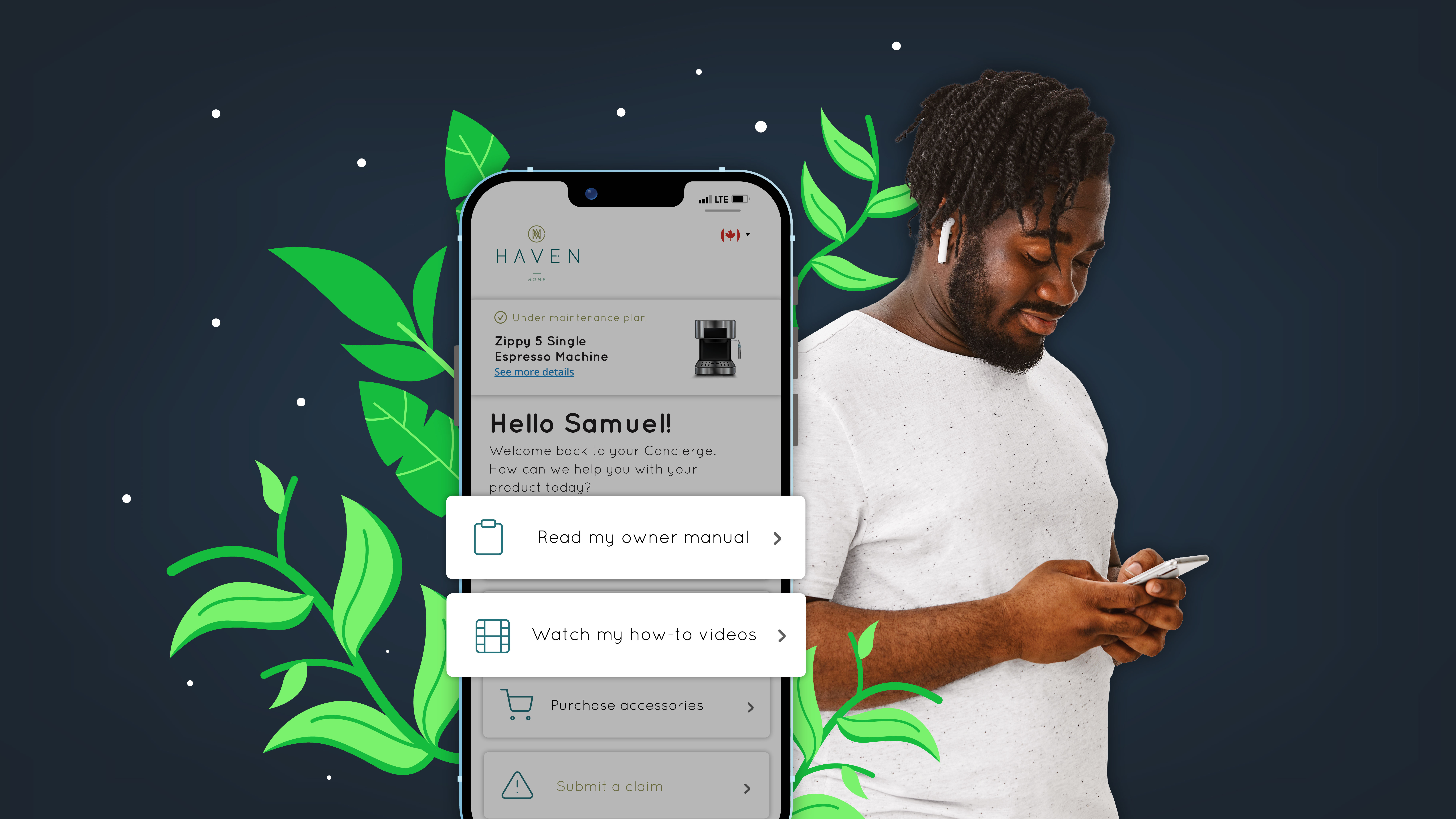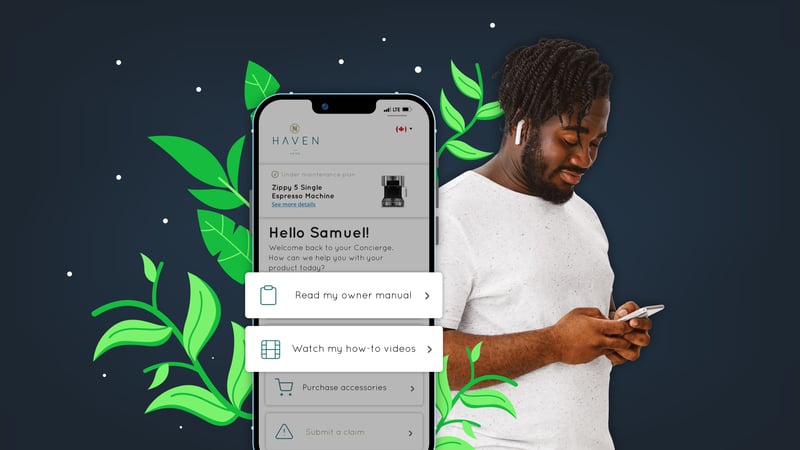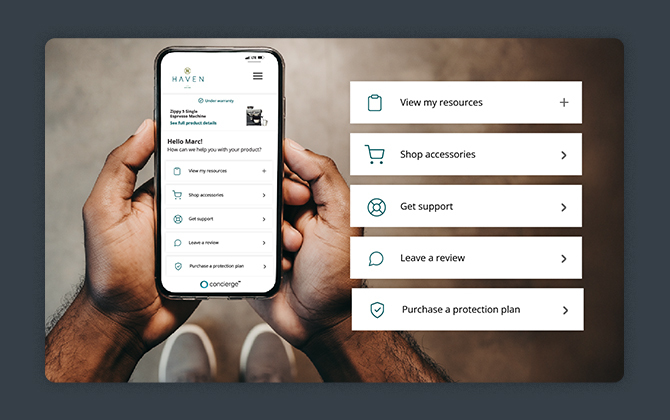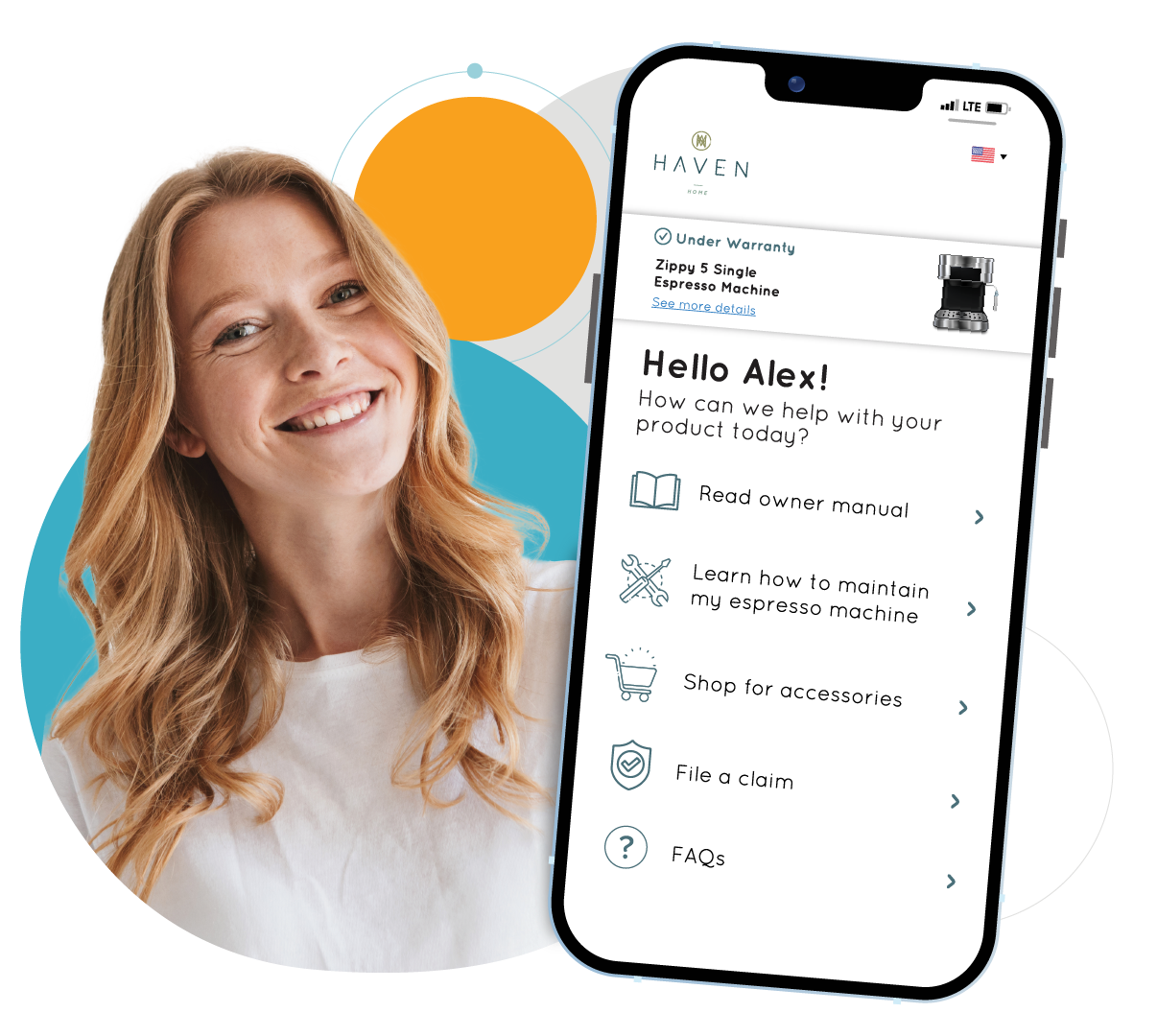Why UX/UI is the Real Engine of a Great Ownership Experience
By Cassie Ulvick, Senior UX/UI Designer at Registria
OUR SOLUTIONS
OUR TECHNOLOGY
5 min read
Heather Wilkerson : Apr 22, 2024 9:53:55 AM

Today’s product owners have high expectations for convenience, accessibility, and on-demand resources. One way that brands can meet this expectation is by giving customers instant, on-demand access to the product information they need. By digitizing in-product materials such as manuals, guides, FAQs, support resources and more, a brand not only enriches the Ownership Experience for its customers, but it can also significantly reduce costs related to printing materials while sending a clear message about its commitment to sustainability.

Reducing your brand’s paper usage is a winning proposition that helps you:
In this post, we’ll review the many benefits of reduced paper consumption for brands and share how brands can efficiently digitize and deliver product information to customers on demand.
Quick poll… How many product manuals have you ever read cover to cover?
If you said “none,” you’re not alone. With respect to the most studious of consumers, most people only refer to a product manual when they first unbox the product and need to know how to use it, and when they have a specific problem or question they need to solve. Yet, product manuals and other product-related information are often left to languish in a file drawer or cabinet, are rarely sought out, and are often thrown away.
On the other hand, digital manuals take up no space and are quickly accessible on the product owner’s preferred digital device, such as a mobile phone or tablet. Owners can easily search for the information they need and may even be assisted in their quest by an interactive assistant. Digitized assets are also easier for product manufacturers to update, ensuring the information is always relevant and up to date.
For the brand, providing convenient access to current product information leads to a better understanding of the product and a more positive Ownership Experience. Clearer and more accessible information in digital manuals can potentially lead to reduced support calls and Average Call Handling Time (ACHT), as well as fewer product returns due to user error. Overall brand sentiment is also enhanced by meeting consumer demand for always on, 24/7 support resources.
While printed product materials haven’t completely gone by the wayside and for some products, are required because of regulations, the trend is certainly pointing toward the convenience, accessibility and relevance of digital product assets.
In addition to consumer expectations around on-demand product resources and information, consumers today are increasingly conscious of the environmental practices of companies. Brands that adopt sustainable practices are often viewed more favorably by consumers, especially younger generations. A recent McKinsey & Co. survey found that 66% of all respondents, and 75% of millennial respondents, say that they consider sustainability when making a purchase. Similar research by Deloitte Consulting found that Millennial and Gen Z consumers are 27% more likely to purchase from a brand when they believe the company cares about its environmental impact.
Numerous studies have found that a good portion of consumers would pay more for environmentally friendly products. From manufacturing methods and raw materials, to packaging to product guides, there are many ways that manufacturers can demonstrate a commitment to sustainability. However, savvy consumers now look beyond feel good branding and platitudes to a company’s actual CSR footprint. As such, sustainability efforts that are evident and transparent – such as digitized in-product materials as an alternative to printed materials – go a long way toward earning consumer trust.

By demonstrating a commitment to reducing paper usage, a brand not only enhances its CSR image and attracts environmentally aware customers, but it also often realizes significant cost savings. In addition to the actual cost of paper and ink, when it comes to printed product manuals and other product information, significant expenses can also be realized on shipping, storage, updating printed materials and disposing of outdated materials.
As much as 3% of a company's revenue is spent on paper, printing, filing and associated paper storage costs.
(Source: Gartner, Inc.)
Printed product materials also require more involvement to manage, from employees actually overseeing the printing process to dealing with printing repairs and downtime and even packaging the materials with the product – which may require larger packaging than the product itself!
In many cases, printed product materials can be entirely replaced by digitized, on-demand resources. For example, full product manuals, troubleshooting guides, FAQs, warranty plans and accessory information can easily be provided in a preferred manner, either online or as a downloadable file.
One Registria client has estimated they will save millions by digitizing their in-product paper materials
like manuals and quick start guides.
Of course, paper usage also takes a toll on the environment.
Statistics show that 50% of business waste is paper products.
While many companies have stated they plan to reduce paper usage, it can be difficult to achieve. It’s been estimated that the average office worker uses 10,000 sheets of copy paper each year, and also that 45% of paper printed in offices ends up in the trash the same day!
Certainly, most businesses are looking for ways to reduce their reliance on paper, and one way to help achieve that goal is to digitize product manuals and related materials.

When it comes to digitizing in-product materials, the first step is to assess your current product assets. Most likely your materials are already in digital form and designed for ease of use when printed. Some design adjustments may be needed to deploy the information in a purely digital format. You’ll also need to review your process for updating the materials. Keep in mind that digital format will enable you to make more frequent updates to the material as needed.
You may already have a website or other platform that can make the digitized product materials available to your product owners. You’ll want to review the user-friendliness of the platform, including the ability to make resources available via different channels and in multiple formats. In the best case scenario, owners would be able to access the materials on a device of their choosing, and be guided efficiently to the specific information they are seeking for their specific product.
Finally, you’ll need to inform customers about the availability of your digital resources, including clear steps for accessing the material and how to get assistance if needed.
Reducing your paper usage aligns with sustainability goals by minimizing your brand’s environmental impact and conserving resources. Additionally, it positively influences consumer sentiment by enhancing corporate image, brand reputation, and meeting customer expectations regarding environmental responsibility.
Digital product materials are more accessible for product owners and, if properly designed, are more convenient to use than printed materials. Brands that digitize their product manuals and other product information are likely to realize cost savings related to printing, sending and storing these assets, as well as fewer support calls and product returns due to better and more current product information in the hands of product owners.
Take the First Step – Take a Tour of Concierge!
Provide your product owners with on-demand access to everything they need to get the most out of their product. From video tutorials and product manuals, to FAQs, claims management, and maintenance alerts, Concierge provides a seamless way to engage with your customers and share information about the products they own.

By Cassie Ulvick, Senior UX/UI Designer at Registria

Imagine your customers being able to access the product information and support they need on demand, in a matter of seconds, and engaging with your...

One of the biggest challenges for product brands today is simple: knowing who their customers are. This is especially true for brands that sell...